#chinese tips
Text
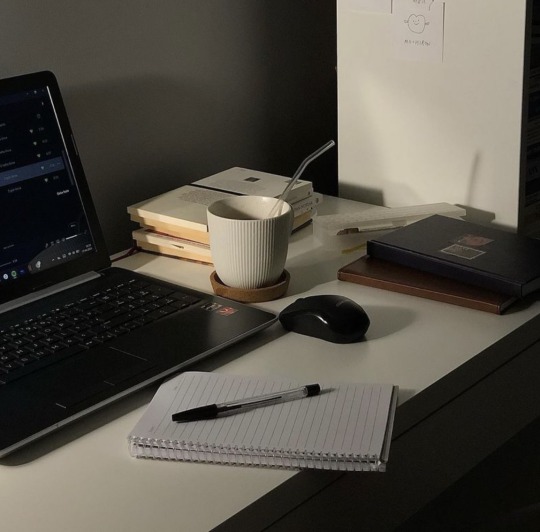
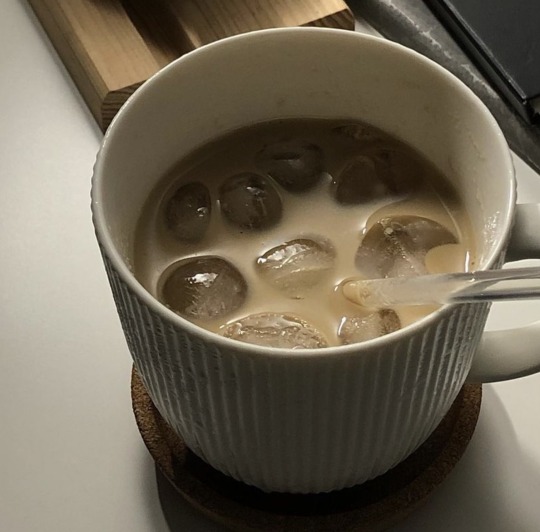
#italy#studyabroad#study motivation#studyinspo#studyspiration#studyspo#studystudystudy#studyvisa#student life#study aesthetic#study mode#study#study chinese#study tips#study time#study japanese#study blog#study notes#studying#art study#studyblr#study hard#study studying studygram studyblr studyabroad studyhard studyspo studymotivation studytime studyinspiration studyinspo studyaccount studyblo#studytube#studytool#study techniques#study tbt.#study table#study tumblr#study usa
2K notes
·
View notes
Text



mmmonkey
#playing around with the idea of their tail tips reflecting their character shcnvdvb#picked bok choy for MK because it’s used as an ingredient in some Chinese food like noodles and soup. at least from my experience#the other option was a rock but I was having a hard time designing it#obviously wukongs is a cloud. I chose a flame for Macaque because shadows/lanterns so I think it kind of works#myart#my art#Lego Monkie kid#lmk#Monkie kid#lmk macaque#lmk six eared macaque#lmk sun wukong#lmk wukong#lmk swk#lmk monkey king#lmk MK#lmk xiaotian#doodles
2K notes
·
View notes
Text
Herbs to help you regulate cortisol and stress 🌿🍵🧚
🍃 Chamomile when you have an anxious stomach
🍃 Valerian when your thoughts don’t let you sleep
🍃 Skullcap when you feel muscle tension from stress
🍃 Holy basil when you’ve been high stress for days
🍃 Rhodiola when you feel burnt out from stress
🍃 Gotu kola when stress is causing you brain fog
🍃 Passion flower when you feel irritable and snappy
#herbs#plants and herbs#natural medicine#meditation#womens health#healthy lifestyle#health tips#health and wellness#healthylifestyle#cortisol#manage stress#hormones#hormonal balance#hormonal imbalance#healingjourney#healing#law of the universe#medicinal herbs#chinese herbs#natural herbs#herbsforhealth
337 notes
·
View notes
Text
culture tips for writing asian settings: calligraphy (pt ii)
in my last post i talked about calligraphy more generally, but here i want to talk about the calligraphy from atla. all of the calligraphy from the show is written by dr siu-leung lee and i'll be using the artbook as my reference.
if you're a writer or artist approaching written chinese, you can think about how script and handwriting might tell us something about a character. dr lee certainly did, and he even tailored writing styles to who he thought might've been writing that text: "If it were a highly cultured royal attendant, he would use a refined, elegant style, but if it were a low-level clerk, he would use a more pedestrian handwriting style."
first thing: modern standard chinese coming out of mainland china uses simplified chinese. this system was developed in the mid-20th century, so it's pretty anachronistic to use this for atla. instead, you should be using traditional chinese as dr lee does (which is still used in hong kong, taiwan, and many diasporic communities). i usually use google translate to switch between the systems.

note the use of simplified 门 (door) instead of the traditional 門 from the aang's unfreezing day comic.
next i'm going to take aang's wanted poster as an example of three different chinese scripts we see in the show. the "title" is in clerical script, the body of the text is in regular script, and the seal is in seal script.

regular script is the standard way you'd learn how to write chinese nowadays. you can see (as i mentioned in part i) how the text is meant to be read up -> down, then right -> left.
clerical script is characterised by fairly compact shapes and a kind of "roundness", and was developed in the late warring states period. this is the script used for the chinese title of the show! in the context of atla, it implies to me that the writer has more specialised calligraphic training than the average person (who, if they can write, would be using regular script). you can compare the difference in styles for the same words between clerical (L) and regular (R):


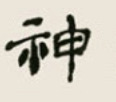

seal script is the most archaic form of chinese on display; this one wouldn't have been written by the calligrapher, but carved into a seal by a craftsperson and then stamped onto the page.
what's also really interesting is dr lee implies a difference in script between the nations. some of the characters used to write water tribe-related concepts:

this is an adapted form of oracle bone script, the one of the earliest forms of chinese writing. this fascinated me because this script was—as the name suggests—written on bone, and perhaps reflects something about the material of what the water tribes were using to write. (you can input modern characters into this website to see examples of their older forms.)
finally, some cool differences in handwriting! this is from the fire day festival poster:

this uses regular script, but in contrast to the excerpt we saw before, the formation of the characters is more haphazard (excitable?). it's also written left -> right! this suggests to us the writer is a commoner, as opposed to a royal scribe.
these are some things you can keep in mind when you're writing or drawing in this universe—while you're probably writing in english, the characters would be steeped in the writing systems we've been talking about. if a character's sending a letter, what might the recipient notice about the handwriting? what does it tell them about their social status or education? could the shape of the letters signal something about where they come from, i.e. water tribe characters write a more curvy script?
disclaimer | more tips
584 notes
·
View notes
Text
Look, I knew five languages by age 19 and now I am learning like 3 more. I work as a language instructor and a consultant. If I can give language learners only one advice, this is it.
STOP LEARNING WORDS ON THEIR OWN.
You're doing yourself a disservice by learning lists of "30 words you must know!" "100 most common words!" like it literally means nothing if you cannot use those words in an appropriate context with proper grammar. So what you actually need to do is learn those words via example sentences.
Of course, sentences have more words so you may think you're learning less but you're actually learning the way to use it in context. That's what's important.
Language is about communication, which also means if you want to learn languages, you have to observe how people communicate with each other universally. Native speakers never have a list of words they know and they don't count every single new word they've learned. So why are you doing it to yourself? What native speakers do is listen to the new word, remember the context they're spoken in, and keep using that word in that context. And that's why people go "wait, you can use that word LIKE THAT?" all the time. So you, a language learner, are also allowed to do that. I'm not even saying those word lists are useless but they're the most useful AFTER you've known most of them and are trying to go over them for practice etc. Native speakers do click on those word lists to check out how many words they don't know or to remind themselves of those words or to learn some facts about each word. That should be your goal as well.
Learn sentences. Learn them in context. Do not fall into the "I must know xx amount of words or I'm a failure at language learning" trap perpetuated by bloggers or youtubers or whatever. Have fun with it!
#language learning#studyblr#langblr#100 days of productivity#chinese studyblr#japanese studyblr#korean studyblr#how to learn#learning#academia#academic#academics#language study#language#languages#study tip#study#study motivation
305 notes
·
View notes
Text
Energy Explained in Other Systems
There is a lack of measurable evidence because any person that has worked with energies have had different experiences but were able to understand and manipulate energies according to their own will.
Energy has been used in many ways within culture and religion and have set beliefs depending on the system being practiced.
Next, are some given definitions defining energies within diverse philosophies.
Hindu = Prana
Chinese = Qi /Chi
Japanese =Ki
Greek = Pneuma
Hawaiian = Mana
Tibetan Buddhism = Lung
Hindu Philosophy
A Sanskrit word for "life force" or "vital principle" is often referred to as Prana. It is described as first coming down from the Sun and connecting all elements of the Universe. It has been invoked within the Hindu scriptures of the Vedas and Upanishads.
Prana is the belief of vitality surrounding all living beings. This energy is responsible for all bodily functions. There are five types of pranas, collectively known as the five vāyus.
1. Prāṇa: Beating of the heart and breathing. Prana enters the body through the breath and is sent to every cell through the circulatory system.
2. Apāna: Elimination of waste products from the body through the lungs and excretory systems.
3.Uḍāna: Sound production through the vocal apparatus. It represents the conscious energy required to produce the vocal sounds corresponding to the intent.
4. Samāna: Food digestions, repair or manufacture of new cells and growth, and heat regulations throughout the body.
5. Vyāna: The energy that is needed for the body to have proper circulation, and the functions for the voluntary muscular system in which there is expansion and contraction processes throughout the body.
Chinese Philosophy
The earliest texts in which Qi or Chi is described was in 'Analects of Confucius' where it could mean "breath" and was combined with the Chinese word for blood.
Xue-qi, "blood and breath."
Living beings are born because of an accumulation of qi, and as the beings live out their lives the qi declines eventually resulting in death. This indicates that xue-qi referred to all living things, but it is believed that qi or chi exists within all things tangible.
For example, the wind is the qi or chi to the Earth, and the cosmic concepts of yin and yang are "the greatest of qi"
Yin and Yang which means "bright-dark," and "positive-negative" are the opposing forces needed in order to complement the concept of balance. There are thoughts that this duality symbolizes contradicting energy forces which manifest as light and dark, fire and water, expansion, and contraction. With this said, Chinese medicine states that the balance of negative and positive forms in the body are believed to be essential for overall satisfactory health.
Japanese Mythology
During the sixth and seventh centuries the Chinese word qi (or chi) was written using the same kanji script for their interpretation for energy being "Ki"
However, the meanings are a tad different.
While the Chinese use chi or qi to describe that energy exists in all things, animate and inanimate objects, the Japanese believe it is the creative flow and expressions used within our daily lives, martial arts, and symbolizes aspects of nature, and thusly the spirits. It is the transfer from living, animate beings in to inanimate which can change and manifest into various forms. It is the necessary intentions one wields.
Greek Mythology
Pneuma, "The breath of life" or "vital spirit" is composed of kinetic energies within the vessel, while Ignis is composed of thermal energies. All human beings need both kinetic and thermal energies in order to properly function.
In Greek medicine, pneuma is the form of circulation throughout the body's vital organs. Due to this the role, pneuma plays within the body to sustain consciousness. Some physiological theories suggest that the pneuma mediates between the heart, and the heart is regarded as the seat of the mind, and the brain.
In similar, Stoic philosophy, pneuma is the active and generative principles that are organized between the individual and the cosmos. The highest forms are the Gods, and the human soul. The human soul is believed to be fragments of the gods given life force in order to be born and given a vessel upon the physical plane. This exists within all animate and inanimate objects as energy transfers and changes.
Hawaiian Mythology
Mana, the spiritual energy of power and strength. This energy exists within places and people; however, it is said that mana is both external and internal concepts.
The Hawaiian people believe that individuals can gain mana or lose it depending on one's actions in everything that they do.
In mythology there were two ways to gain mana, and this was either done sexually or through violence.
To sexually gain mana one must invoke the god, Lono, deity of peace and fertility.
To gain mana through violence one must invoke the god Ku, deity of war and politics.
Tibetan Buddhism
Lung means the wind or breath. Exists as a key concept in Vajrayana traditions. Generally, it's concept relates to the understanding of the subtle body, and Three Vajras. Those three are the body, speech, and mind. Lung relates to the subtle flow of energy and the five elements. (Fire, Water, Earth, Space, and Air) Lung is mostly closely connected to the Air Element.
Lung has also been used to describe the winds or prana being used in conjunction with the subtle body during a time of exercise, but also more importantly everyday functions of the body and its own senses. There are five psychic winds which manifest into mahabhuta. These five relate to the lifeforce that animate the body-mind (namarupa) of all sentient beings.
The Five Root or Major Winds
The root winds support an element and is responsible for a function of the human body.
The 'life-supporting wind' (Tib. སྲོག་འཛིན་རླུང་, sok dzin lung; Wyl. srog 'dzin rlung).
Located in the brain, this lung regulates functions such as swallowing, inhalation, and concentration.
The 'upward-moving wind' (Tib. གྱེན་རྒྱུ་རླུང་, gyengyu lung; Wyl. gyen rgyu rlung).
Located in the chest and thorax, this lung regulates, among other things, speech, the body's energy and vitality, memory, mental endeavour and diligence.
The 'all-pervading wind' (Tib. ཁྱབ་བྱེད་རླུང་, khyap ché lung; Wyl. khyab byed rlung). Residing in the heart, this lung controls all the motor activities of the body.
The 'fire-accompanying wind' (Tib. མེ་མཉམ་གནས་རླུང་, me nyam né lung; Wyl. me mnyam gnas rlung). Found in the stomach and abdomen area, the fire-accompanying wind regulates digestion and metabolism.
The 'downward-clearing wind' (Tib. ཐུར་སེལ་རླུང་, thursel lung; Wyl. thur sel rlung). Located in the rectum, bowels and perineal region, this lung's function is to expel faeces, urine, semen, and menstrual blood. It also regulates uterine contractions during labour.
The Five Branch Winds
The five branch winds enable the senses to operate.
The naga wind (Tib.ཀླུའི་རླུང་, lu'i lung; Wyl. klu'i rlung). This lung connects with the eyes and sight.
The tortoise wind (Tib. རུ་སྦལ་གྱི་་རླུང་, rubal gyi lung; Wyl. ru sbal gyi rlung). This wind connects with the heart and the sense of hearing.
The lizard wind (Tib.རྩངས་པའི་རླུང་, tsangpé lung; Wyl. rtsangs pa'i rlung) associated with the nose and the sense of smell.
The devadatta wind (Tib.ལྷས་བྱིན་གྱི་རླུང་, lhéjin gyi lung; Wyl. lhas byin gyi rlung) related to the sense of taste.
The 'king of wealth deities' wind (Tib. ནོར་ལྷ་རྒྱལ་གྱི་རླུང་, nor lha gyal gyi lung; Wyl. nor lha rgyal gyi rlung). This wind connects with the body and the sense of touch.
#energy work#pagan#witch#witch community#pagan witch#witchblr#witchcraft#beginner witch#baby witch#witch tips#energy manipulation#philosophy#theology#greek mythology#hindu mythology#buddhism#hawaii mythology#chinese mythology#japanese mythology#metaphyics#metaphysical#spiritualism#spirituality
331 notes
·
View notes
Text



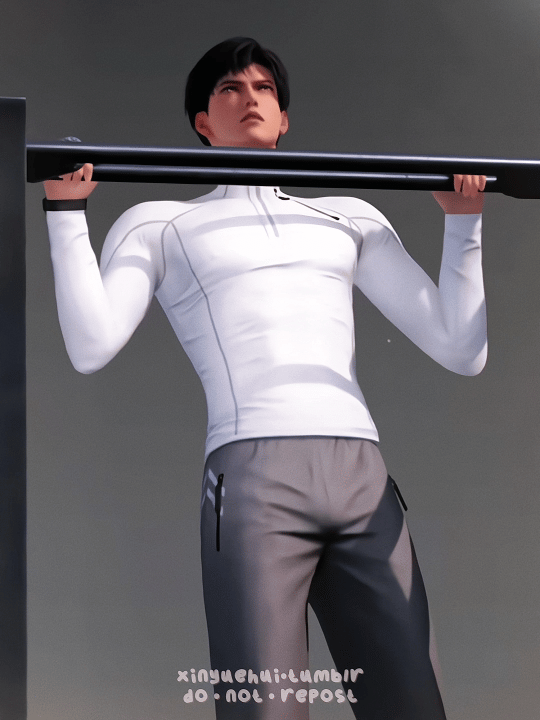
Quality Time New Feature ⛄ Love and Deepspace
#love and deepspace#恋与深空#love and deep space#黎深#li shen#zayne#dailyvideogames#gamingedit#dailygaming#3d animation#video games#*4#otome#otome game#paper games#chinese game#he's so covered up like it will tip all of us over like victorians when they see ankle if he ever showed anything#and then i read a comment that said “he's covered up because he doesnt want to show his scars” okay throw me in the fire 😭#i didnt zoom in on the 3rd gif it was in the video...im not sure if they want us to look up or down i only have 2 eyes i cant do this
86 notes
·
View notes
Text
hey 🇭🇰Cantonese🇲🇴 learners!

I got recommended this keyboard App called TypeDuck🦆by anwar @ Insta that you may like to check out! (If you haven't heard of, or aren't already using, that is!)
Even though I have yet to try it (long story involving my phone being wonky so I can't install this for myself, for now), cantonese4parents @ Insta already has, and it's available on Playstore, so I'd expect it has been vetted safe enough!
Apparently if you use this keyboard to type out in 粵拼 Jyutping (Cantonese Romanisation, equivalent to Mandarin's Pinyin system), it will show you not only the Jyutping spelling but also the English meaning alongside the 漢字 Chinese characters! ↓


Besides English, it apparently supports some less common language translations like “Hindi, Nepali and Urdu” (quoting from their website) too.
Very useful I think, for anyone who's not good at recognising/mapping the 漢字 to the 粵拼 yet! 😺
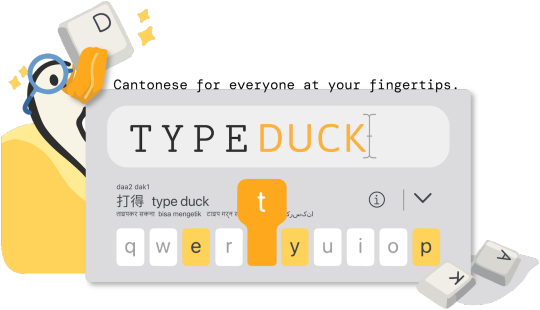
Trivia: If you're wondering why this App is called “TypeDuck” 🦆, it's because it's a play on 打得 in Cantonese (Jyutping: daa² dak¹), which means “able to type”! Great pun! Yes? 😸
55 notes
·
View notes
Note
When I was 15 we went to China and we went to see a martial arts show and were allowed to take photos with the performers and hold the weapons. Well, the one I first picked (ji polearm) was heavy and difficult to just pick up and hold straight up and off the ground. I don't understand why weapons like this are 'NEVER heavy' is all over here. There ARE heavy ones.
So, there's a couple important things to note. For obvious reasons, I can't examine that specific ji, but they usually weigh about 9lbs. Which isn't particularly heavy. Now, it is possible that the martial arts school was using a weighted ji as part of their act, or it could have been an ornate example. Even then, it would be unlikely to break around 15-20lbs. Which loops back to the original point, infantry melee weapons aren't heavy.
It is worth remembering that if you're picking up a weapon without any prior experience, it may feel much heavier than it's weight would imply. This is, in large part, because you don't know how to find the weapon's balance. As, I'm sure you noticed during the show, the trained practitioners had no problem spinning it around like a baton.
This is going to be true of most melee weapons. Even a sword, which weighs a fraction of what that ji does, may still feel awkward and heavy until you learn how to wield it.
With all that said, the ji is on the heavy side for melee weapons. That's generally true of polearms. They're large and a bit awkward (in the hands of the untrained), but the weight is still quite manageable once you learn how to hold them.
It's possible (though somewhat unlikely) the weapon was also simply too larger for you to wield. This tends to be more of an issue with being unable to effectively balance the weapon in your grip, rather than it simply being too heavy to physically lift.
With all of that said, heavy weapons do exist. One of the classic examples are parade swords, which were heavily ornamented, and could weigh up to 20lbs. The important thing to remember with these object is that they're art pieces, not functional weapons. However, the fifty pound greatsword that looks like it was fashioned out of a chrome bumper does not, and while an adult with average physical fitness could lift such a weapon, wielding one in combat would be extremely tiring.
Fatigue is the real reason you don't see heavy melee weapons. The heavier the object is, the more energy you need to expend getting it moving (or stopping it.) The more energy you burn getting your weapon up to speed, the faster you will exhaust. When you're exhausted and facing a fresh opponent, you die. (That last bit is part of why you never saw things like the 50lb greatsword. It's not enough to be able to utterly obliterate a foe in one strike, you also need to be ready for all of his friends that are waiting behind him.)
As mentioned earlier, weighted weapons can be used for shows like the one you attended. Usually the purpose is to adjust the center of gravity on the weapon to facilitate specific tricks, but I don't know if that was the case here.
Either way, what you're looking at isn't so much the amount of weight, as an unexpected point of balance. I don't know what your general physical fitness was as a teen, but lifting 10lbs should not be an issue for a 15-year-old. Consider that your winter coat probably weighed more than that ji. However, you were not expecting the weight distribution, and probably didn't know how much weight to expect. Also, while I didn't state it explicitly, weapons tend to feel heavier than they are, until you get used to them. This is a consequence of the weapon's point of balance being someplace you weren't expecting. It gets better, because it's surprisingly difficult to lift significant amounts of weight off your center of gravity. The normal exercise example of this is to lift and hold a small barbell at arm's length. If you've never tried it, (or tried to hold a gun on someone for an extended period of time), it's surprisingly difficult. No one is going to argue that 1-2lbs of weight is heavy, but when you're holding it out, away from your body, it feels much heavier, and takes more effort. So, the, “trick,” with the ji is to keep its center of balance is close to your center of gravity. That's actually pretty easy once you've started to build familiarity with the weapon, but it can result in a deceptive first encounter.
Finally, I hope it's self-explanatory, but a theatrical show is not the same as battlefield combat. A lot of the physical considerations, like the threat of being killed because you burned too much energy, aren't really a problem in a ninety minute show, where performers can rotate out. This leads to a flashier, more physically demanding performance. You couldn't take that performance onto a battlefield because, “exhausted then dead,” but it will entertain the crowds.
Which leads back to: No. Heavy weapons do exist, but their place is on the mantel or stage, not in combat. You NEVER want a weapon to be any heavier than is absolutely necessary, and in a lot of cases, when you can't get the weight down, that will diminish the value of that weapon in combat.
-Starke
This blog is supported through Patreon. Patrons get access to new posts three days early, and direct access to us through Discord. If you’re already a Patron, thank you. If you’d like to support us, please consider becoming a Patron.
#howtofightwrite#writing advice#writing reference#writing tips#martial arts#chinese martial arts#melee weapons#Starke answers
222 notes
·
View notes
Text

RED BOOTS DAY - last minute shopping!
#hot asian girl#chinese lady#thigh high boots#hot asian lady#stilletto heels#high heels#red lips#red boots#steel tipped#red boots day#louboutin#christian louboutin
41 notes
·
View notes
Text


#italy#studyabroad#study motivation#studyinspo#studyspiration#studyspo#studystudystudy#studyvisa#student life#study aesthetic#study notes#study chinese#study time#study blog#study#study mode#studyblr#study japanese#study tips#study hard#art study#studying#study tumblr#studytube#studytwt#study tag#study studying studygram studyblr studyabroad studyhard studyspo studymotivation studytime studyinspiration studyinspo studyaccount studyblo#studytool#study table#study tbt.
1K notes
·
View notes
Text
Hello! *shyly waving*
I've had this blog for a lil while and want to start posting original content asap but for now I'll try to make an intro post fisrt.
My blog is running on queue untill I gather some material to post. See you soon!
#studyblr#langblr#studyspo#study inspo#japanese#nihongo#korean#chinese#mandarin#study motivation#study notes#study space#language learning#language#languages#college#academia#student#bookworm#bujoinspo#study blog#study inspiration#study tips#studying#studyblr community#studyinspo#student life#study aesthetic#mine
28 notes
·
View notes
Text
Getting My Life Together // 3
*mid-Atlantic announcer voice* This weekend, we are pleased to welcome you back to our regularly scheduled program 📺



Self Care Things 🎀
Took my vitamins 💊
Did my physiotherapy exercises 💪
Rowing workout 🚣♀️
Went for a walk 🚶♀️
Finished folding the laundry 🧺
Listened to music 🎶
Journaled and sketched 📒
Learning Things 📍
Watched Clinical Psych lectures 👩⚕️
Watched Cognitive Psych lectures 🧠
Reviewed Clinical Psych notes 📝
Reviewed Cognitive Psych notes 👀
Completed Japanese lesson ⛩️
Completed Korean lesson 🇰🇷
Completed Chinese lesson 🀄



💌: Yes, everything has an emoji now because I had time for that, isn't that nice? 😌 I wish every day could be like this, but since it can't, I will just let the difficulties make the good days better ☺️
#studyblr#workblr#study inspiration#study motivation#myhoneststudyblr#astudentslifebuoy#zesty's life#getting my life together#100 days of productivity#100 days of study#100 days of self discipline#100 days challenge#100dop#self care#self love#light academia#dark academia#chaotic academia#hustle#productivity#student life#university#psychology student#langblr#korean studyblr#japanese studyblr#chinese studyblr#daily habits#daily routine#daily health tips
65 notes
·
View notes
Text

#makeup#cosmetics#skincare tips#skincare#self love#self care#night routine#korean beauty#korean makeup#korean#chinese#douyin#xiaohongshu#fashion#sanrio#faye webster#wonyoung#jennie#fiona apple#mazzy star#this is what makes us girls#just girly things#girlblogging#tumblr girls#lana del rey#boop#kawaii#lana del ray aka lizzy grant#japan#grimes
18 notes
·
View notes
Text
How to say "I love you" in your partner's language - Part 1
English: I love you
Spanish: Te quiero / Te amo
French: Je t'aime
Italian: Ti amo
German: Ich liebe dich
Portuguese: Eu te amo
Russian: Я тебя люблю (Ya tebya lyublyu)
Chinese (Mandarin): 我爱你 (Wǒ ài nǐ)
Japanese: 愛してる (Ai shiteru)
Korean: 사랑해 (Saranghae)
Arabic: أحبك (Ana bahebak)
Hindi: मैं तुमसे प्यार करता/करती हूँ (Main tumse pyaar karta/karti hoon)
Greek: Σ'αγαπώ (S'agapo)
Turkish: Seni seviyorum
Dutch: Ik hou van jou
Swedish: Jag älskar dig
Bokmål: Jeg elsker deg
Finnish: Rakastan sinua
Polish: Kocham cię
Hungarian: Szeretlek
Nynorsk: Eg elskar deg
Dangme (spoken in Ghana): I suɔ mo.
We'll add more languages in the nest posts. Ask if you want to add your own language or different phrases. We're always open to feedback!
#i love you#education#relationships#cultural differences#relationship goals#tumblr stuff#relationship advice#dating tips#how to date#hungarian#polish#finnish#norwegian#swedish#turkish#greek#hindi#arabic#korean#japanese#chinese#russian#portuguese#german#french#italian#spanish#english#languages#language stuff
24 notes
·
View notes
Text
The SECRET to Writing NEAT Chinese Characters
youtube
48 notes
·
View notes